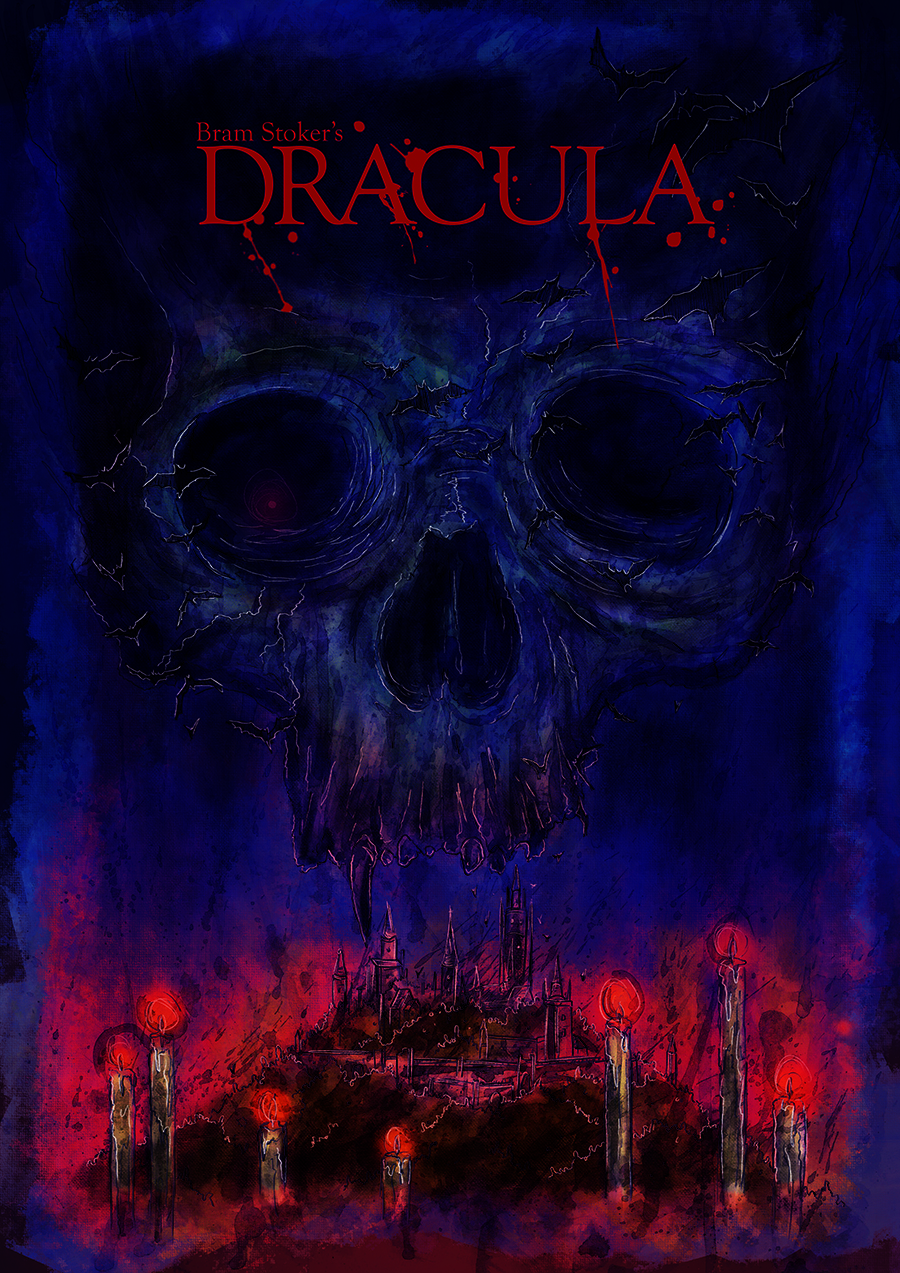
 You would seem aloof, distant, not to mention pensive if you were a 15th century monarch. And in a country unknown to many there would be insurmountable myths surrounding your rule. The reputation of the cruelty leveled at your enemies would have to be embellished. As a monarch the legend must outweigh the reality. It keeps lesser ones at bay. For Vlad the Impaler, who arguably Bram Stoker based his 19th century gothic novel ‘Dracula’ on means for artists, a myriad of ways in which to interpret such an enigmatic figure. In Lyndon White’s case his interpretation of the mythic Dracula makes for some striking art.
You would seem aloof, distant, not to mention pensive if you were a 15th century monarch. And in a country unknown to many there would be insurmountable myths surrounding your rule. The reputation of the cruelty leveled at your enemies would have to be embellished. As a monarch the legend must outweigh the reality. It keeps lesser ones at bay. For Vlad the Impaler, who arguably Bram Stoker based his 19th century gothic novel ‘Dracula’ on means for artists, a myriad of ways in which to interpret such an enigmatic figure. In Lyndon White’s case his interpretation of the mythic Dracula makes for some striking art.
In a darkened room, amidst a vast amount of bats, some defined while others are drawn in the abstract, surround a tense Dracula. You can’t tell if his eyes are open or closed and the blood red cloak looks as if it’s floating around him. White somehow in his illustrated rendition of Dracula creates movement. And each art-filled panel progresses the narrative with practically no words. A wordless graphic novel is not new. As early as medieval times, clunky carvings told stories without the use of dialogue. But it was during the mid to late 20th century where it was clearly ascribed to the comic book genre. The ability to tell a story in a series of panels has become a staple comics. Similarly the vampire motif has also been prevalent in several forms. Gothic horror in particular allied with the ideas of romance and death, alongside a mingling of folklore is rich for this rendering of Dracula. As the count moves from room to room until he is finally outdoors you get enveloped in the idea of what gothic horror is meant to do.
Most of all there’s the fear factor. Dracula is associated with the unfamiliar and plague. When you’re dealing with the drinking of blood, or the undead there are a series of tropes that come about. One may be the fear of invasion. In Bram Stoker’s novel there is the sense that Dracula is going to invade England and turn everyone into vampires. Essentially the threat of creating an enslaved population through disease is a terror that overrides romanticism. Dallying with the unknown is perhaps adventurous. However, you have no desire to become him. Thus the sense of loneliness that abounds throughout White’s artwork. Dracula, although surrounded by others is still alone. Even those he’s turned are undead, but they’re not his equals. On the other hand, just when you start to feel that we’re dealing with someone who is misunderstood White shows us Dracula’s true being. He is soulless and has lost his humanity. Those longing looks may be because of physical hunger and not the need for human comfort.
Overall, Lyndon White’s ‘Dracula’ honors the tradition of the vampire story by showing both the romance and the truth. From a human form lurking in the shadows to a frightening skeletal form, White has created a story with little needs for words. Here is where the art speaks volumes.

Leave a Reply